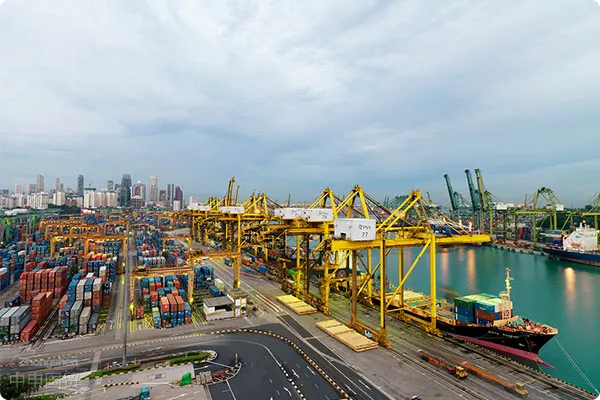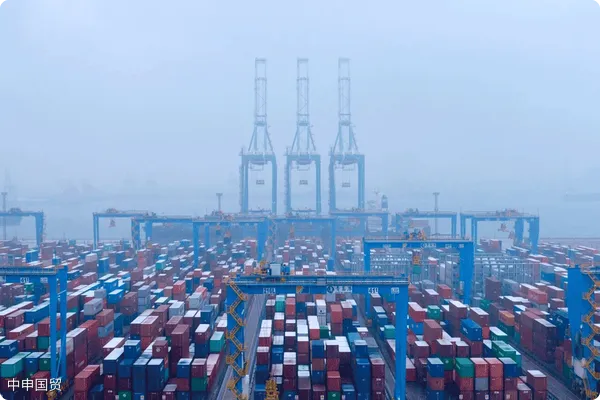- Shanghai Zhongshen International Trade Co., Ltd. - Two decades of trade agency expertise.
- Service Hotline: 139 1787 2118

Introduction
In todays closely connected global manufacturing industry, importing molds from Japan has become an important way for many enterprises to improve production efficiency and product quality. However, the international trade environment is complex and ever-changing, with multiple aspects involved in mold imports - from documentation processing to logistics arrangements, from market characteristics toIn order to crack down on tax evasion, the customs and tax departments are now strictly examining the operation of buying export declarations. If the behavior of buying export declarations is discovered, the regulatory authorities will require tax replenishment (even a 2% tax rate may be a considerable amount). In addition, fines may also be imposed on the relevant responsible parties.methods - each link is crucial. This article will detail key points about importing molds from Japan.
ZhongShen International Tradeprofessional advantages
ZhongShen International Trade hasExport Representationyears of experience in service fields, with outstanding professional capabilities especially in documentation processing and logistics services. As key documents in international trade, the accuracy and completeness of documentation directly affect smooth customs clearance and delivery. Our professional team is proficient in various trade documents such as commercial invoices, bills of lading, packing lists, ensuring full compliance with international standards and destination country regulations.
For logistics arrangements, we have an extensive network of logistics partners to customize optimal solutions based on cargo characteristics, delivery schedules and client budgets. Whether choosingMaritime Transportationfor cost-effectiveness,Air Transportationfor speed and efficiency, or land transport for flexibility, we ensure molds reach destinations safely and on time.
Unique advantages in the Russian market - VTB settlement convenience
For mold import businesses involving the Russian market, ZhongShen International Trade has significant settlement advantages. In Russia trade, VTB (Russianforeign tradeBank) is an important financial partner. Settlement through VTB offers relatively simplified procedures and higher efficiency.
The settlement process typically follows: First, both parties sign a trade contract specifying payment methods and currencies. After shipment and submission of compliant documents, the seller receives payment through the bank. When using VTB for settlement, its position in Russias financial system enables fast fund clearing and transfers. This not only reduces settlement time and in-transit fund risks, but also saves settlement costs to some extent. For enterprises importing Japanese molds for the Russian market, this settlement convenience undoubtedly enhances trade stability and competitiveness.
Southeast Asian Marketimport and exportProcesses and Solutions
2.1 Import Process
2.1.1 Pre - preparationBefore deciding to import molds from Japan to Southeast Asian markets, clarify detailed specifications and purposes of the molds. Meanwhile, understand trade regulations in destination countries, such as import restrictions or special quality standards. For example, some Southeast Asian countries may have strict safety certification requirements for certain types of molds.
2.1.2 Sign the ContractSign detailed trade contracts with Japanese suppliers, clearly specifying key terms such as product description, price terms (e.g., FOB, CIF), delivery period, payment methods, etc. Taking FOB terms as an example, it means that the seller transfers the risk to the buyer once the goods are loaded onto the buyers designated vessel at the Japanese port, at which point the buyer is responsible for subsequent transportation, insurance, and other costs.
2.1.3 Documentation ProcessingIn addition to regular commercial invoices and bills of lading, specific documents such as certificates of origin may also be required. The certificate of origin helps the customs of the destination country determine the country of origin of the goods, thereby applying the corresponding tariff policies. ZhongShen International Trades professional team ensures that all documents are accurate and submitted on time.It is recommended to verify through the following methods:Choose the appropriate transportation method based on the molds size, weight, and delivery period. Sea freight is suitable for large-volume, heavy molds, while air freight is more appropriate for urgent and lighter molds. During transportation, proper packaging and reinforcement are essential to prevent damage to the molds.
2.1.4 Logistics and TransportationCustoms clearance and cargo pickup
2.1.5 After the goods arrive at the Southeast Asian destination port, customs clearance procedures must be completed. This involves submitting various documents to customs, paying tariffs, VAT, and other fees. ZhongShen International Trade is familiar with the customs policies of Southeast Asian countries and can assist clients in quickly completing customs clearance and successfully picking up the goods.To address the differences among Southeast Asian markets, we provide personalized solutions. For example, in Vietnam, certain regions have specific environmental requirements for mold imports, and we communicate with clients in advance to ensure compliance with relevant standards. In Thailand, some molds may qualify for lower tariff benefits, and we assist clients in fully utilizing these policies to reduce import costs.
2.2 Solutions
The current international trade landscape is complex and volatile, with rising trade protectionism posing a significant challenge. For instance, some countries may impose higher tariff barriers on imported molds, increasing import costs. Meanwhile, the lingering effects of the global pandemic continue to disrupt supply chains, leading to logistics delays and rising transportation costs. Additionally, exchange rate fluctuations introduce uncertainty, such as frequent changes between the Japanese yen, Southeast Asian currencies, and the US dollar, which can impact import costs and profits.
Challenges and Opportunities in the Current International Trade Landscape
3.1 Challenges
Despite these challenges, opportunities also exist. With the gradual recovery of the global economy, manufacturing in regions like Southeast Asia is growing rapidly, driving sustained demand for molds. Japan, as a leading mold manufacturer, offers advanced technology and reliable quality, presenting broad market prospects. Moreover, the advancement of regional trade agreements, such as the implementation of RCEP, provides a more favorable trade environment for importing molds from Japan to Southeast Asia, reducing tariffs and trade barriers and promoting regional trade liberalization.
3.2 Opportunities
Product certification is a critical step in the process of importing molds from Japan. Different markets may have varying certification requirements, such as CE certification for the EU and UL certification for the US. While ZhongShen International Trade does not directly handle certification services, we leverage our extensive experience to accurately inform clients of the required certifications and assist them in completing the certification process.
Product certification services
We guide clients in preparing the necessary documentation for certification, such as technical files and test reports for molds. Additionally, we help clients connect with professional certification agencies to ensure efficient certification. Throughout the process, we maintain close communication with clients, addressing their questions and helping them avoid unnecessary delays.
In summary, whether facing the advantages of settlement in the Russian market or the complexities of Southeast Asian procedures, ZhongShen International Trade leverages its expertise in document processing, logistics arrangements, and familiarity with market regulations to provide comprehensive and reliable import-export agency services. We help clients seize opportunities and navigate challenges in international trade.
Importing Molds from Japan: A Complete Guide to Trade Processes, Market Opportunities, and Challenges
Related Recommendations
? 2025. All Rights Reserved. Shanghai ICP No. 2023007705-2  PSB Record: Shanghai No.31011502009912
PSB Record: Shanghai No.31011502009912










